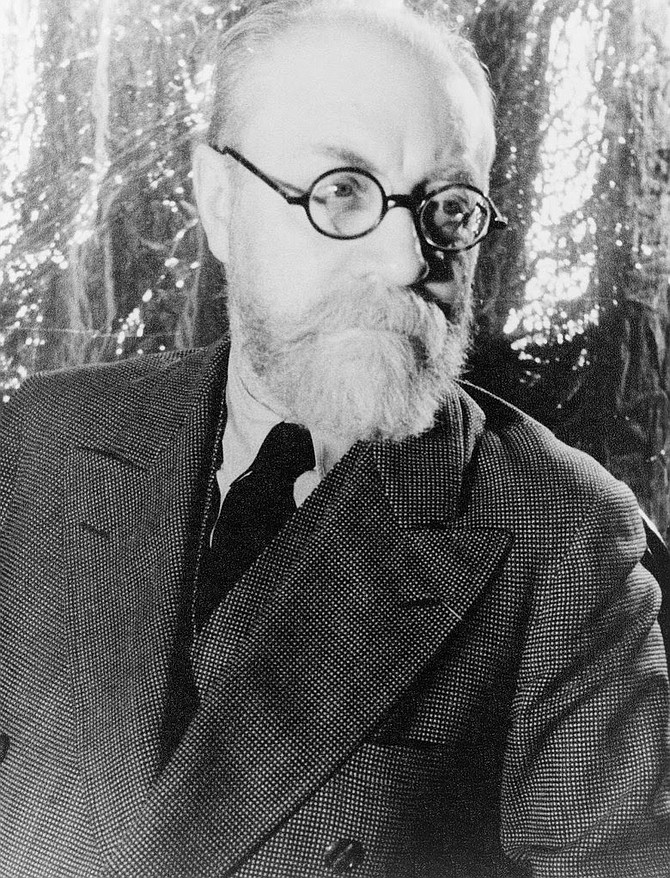 Facebook
Facebook
 X
X
 Instagram
Instagram
 TikTok
TikTok
 Youtube
Youtube

My atheist friend and I had a long conversation about bad writing after seeingThe Color of Light: Story of Henri Matisse’s Final Masterpiece at the Tenth Avenue Arts Center.
The premise for the play is a tantalizing bit of history. Late in life, the painter struck up a close and years-long friendship with a young woman who, during their friendship, became a nun. An aging atheist artist of international renown and a poor, uneducated, deeply religious girl. What did he see in her that he would, in the words of the play, “share his deepest thoughts” with her? Why did he build her convent a chapel at his own expense?
Playwright Jesse Kornbluth doesn’t answer these questions. His Sister Jacques Marie is simpering and insipid, and their conversations are banal. What were his deepest thoughts? Why not share them with the audience?
My friend and I left wondering what this odd duo’s real conversations were like. Were there heated arguments about the nature of reality, the meaning of life, the existence of God? Was he repelled or intrigued by her religion? As he faced the Great Unknown of death, did his thoughts turn to God and eternity, a la Oscar Wilde? After all, he was building and decorating a Catholic chapel, designing everything himself. What did this atheist think as he designed the altar for the unbloody sacrifice of the Mass? Or as he made the Stations of the Cross, the macabre death dance of the God-man?
And why was a devout young woman drawn to a crotchety old atheist? Was she trying to save his soul? Was she invigorated by their conversations? Was she looking for a father figure?
The audience doesn’t leave any the wiser on any of those questions, because the writer never gets in their heads. Instead, we were treated to a display of Catholic stereotypes including the scowling arms-crossed-over-her-chest Mother Superior from Central Casting, and the bumbling, effete, talentless poser of a priest.
Vantage Theatre's Color of Light plays at the Tenth Avenue Arts Center through February 3.


My atheist friend and I had a long conversation about bad writing after seeingThe Color of Light: Story of Henri Matisse’s Final Masterpiece at the Tenth Avenue Arts Center.
The premise for the play is a tantalizing bit of history. Late in life, the painter struck up a close and years-long friendship with a young woman who, during their friendship, became a nun. An aging atheist artist of international renown and a poor, uneducated, deeply religious girl. What did he see in her that he would, in the words of the play, “share his deepest thoughts” with her? Why did he build her convent a chapel at his own expense?
Playwright Jesse Kornbluth doesn’t answer these questions. His Sister Jacques Marie is simpering and insipid, and their conversations are banal. What were his deepest thoughts? Why not share them with the audience?
My friend and I left wondering what this odd duo’s real conversations were like. Were there heated arguments about the nature of reality, the meaning of life, the existence of God? Was he repelled or intrigued by her religion? As he faced the Great Unknown of death, did his thoughts turn to God and eternity, a la Oscar Wilde? After all, he was building and decorating a Catholic chapel, designing everything himself. What did this atheist think as he designed the altar for the unbloody sacrifice of the Mass? Or as he made the Stations of the Cross, the macabre death dance of the God-man?
And why was a devout young woman drawn to a crotchety old atheist? Was she trying to save his soul? Was she invigorated by their conversations? Was she looking for a father figure?
The audience doesn’t leave any the wiser on any of those questions, because the writer never gets in their heads. Instead, we were treated to a display of Catholic stereotypes including the scowling arms-crossed-over-her-chest Mother Superior from Central Casting, and the bumbling, effete, talentless poser of a priest.
Vantage Theatre's Color of Light plays at the Tenth Avenue Arts Center through February 3.
Comments